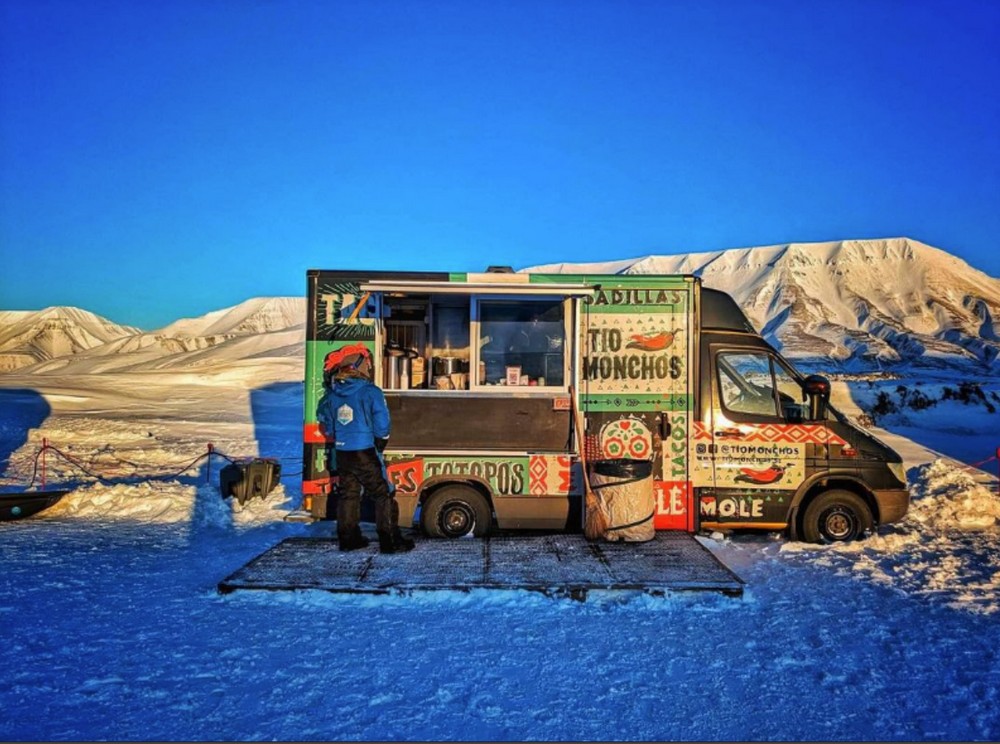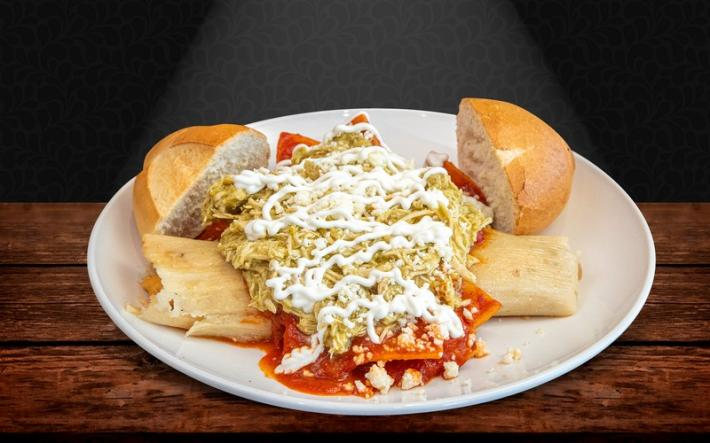We found birria at Tio Moncho’s, the world’s northernmost taquería, on a recent spring day, while seeking warmth deep in the Arctic Circle.
Tio Moncho’s shares a mixed-use building with the library, auditorium, and local government offices of Longyearbyen, the largest town on the Norwegian archipelago of Svalbard. The islands are visa-free and home to about 2,900 people from over 50 nationalities.
Most live in Longyearbyen, a tight-knit community clinging to the edge of the wilderness. Reindeer regularly wander down the streets, and no one leaves town without polar bear protection (usually, a high-caliber rifle). Other than that, life here is pretty normal—people go to work, get drunk, fall in love, and long for tacos.
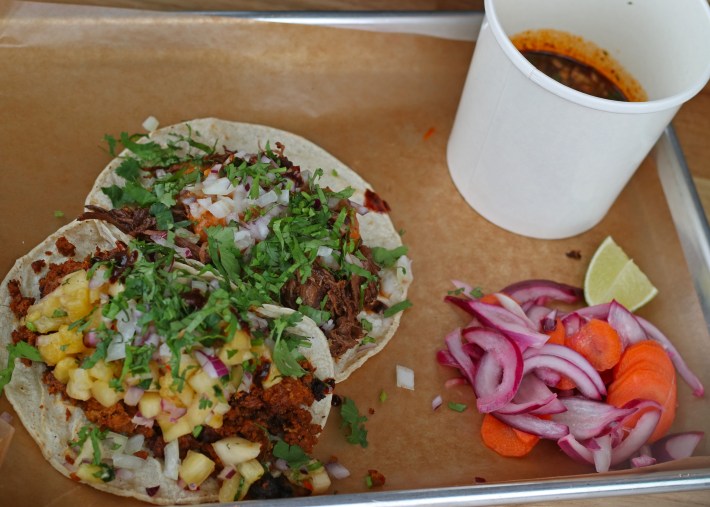
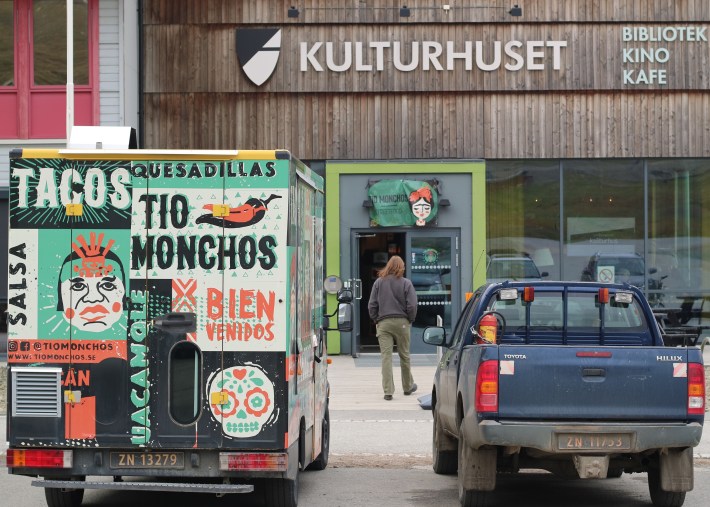
Tio’s, as locals call it, is here to meet that need. The restaurant doesn’t exclusively serve Mexican food—daily specials range from jerk chicken to spaghetti bolognese—but it’s clear to see that the heart of Swedish chef and owner Andreas Styrsell belongs to the taquerías of Los Angeles. There are bottles of Jarritos in the fridge, El Yucateco and Tajín at the sauce station, and gallon jars of house-made salsas roja and verde (marked “hot” and “hot, hot, hot,” respectively).
When I came in for birria, Styrsell had displayed the newest jewel in his collection on the counter: a bag of corn tortillas from Glassell Park’s Tortilleria La California, the label sporting a line drawing of L.A. City Hall.
“They’re much better than the ones we had before,” Styrsell told me, his usual deadpan colored with ardor.
It was the first time Styrsell had served birria at Tio’s; he’d never had tortillas robust enough to contain the dish in all its quivering liquescence before now. His was birria de res, the beef stewed to a slouch with guajillo and ancho chiles (also sourced in Los Angeles) that breathed earth and smoke through the fibers of the meat. The consomé, so collagen-rich it adhered to lips and fingertips, was tinted with achiote in the deep red of a fading sunset.
The dish reminded me that I hadn’t seen a sunset in over a month. Nor had I eaten birria in over a year—not since I left my most recent home in Sacramento. That taco, dipped in broth, was my Proust’s madeleine in tea, invoking memories of California in every draw of its onion-scented steam. And no matter how generously I anointed them, the tortillas never broke.
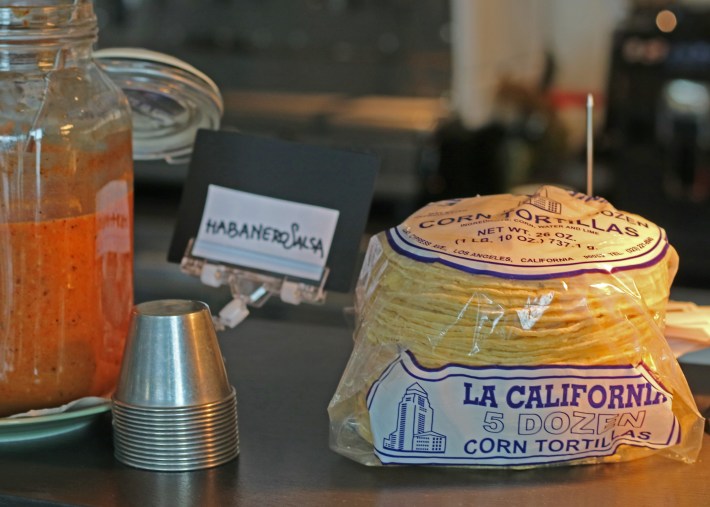
A Well-Traveled Tortilla
La California has been Tio Moncho’s tortilla-connect since this past May, after Styrsell’s last research trip to Los Angeles. The tortillería, open since 1996 in a building that dates back to the 1960s, supplies mostly local chains like King Taco, Taquería Hoy, and Rico’s Tacos. Tio’s is its first international customer. At 800 miles below the North Pole, it’s about as far from L.A. as possible.
“I had never heard of that place,” said Natali Corona, a longtime employee of La California who helped Styrsell during his visit. “When I Googled it, I was like, ‘Oh my God, they are way out there.’”
I reached Corona by phone at her tiny office in the tortillería, a low-slung brick building with its industrial edges softened by a mural of Our Lady of Guadalupe. “Abierto al Público,” beckons an arrow painted above the icon, overlapping the Virgin’s golden mandorla. As she spoke, I thought I could hear the company’s machines rumbling beneath her words, pressing flour and masa into tortillas as they have for nearly 30 years.
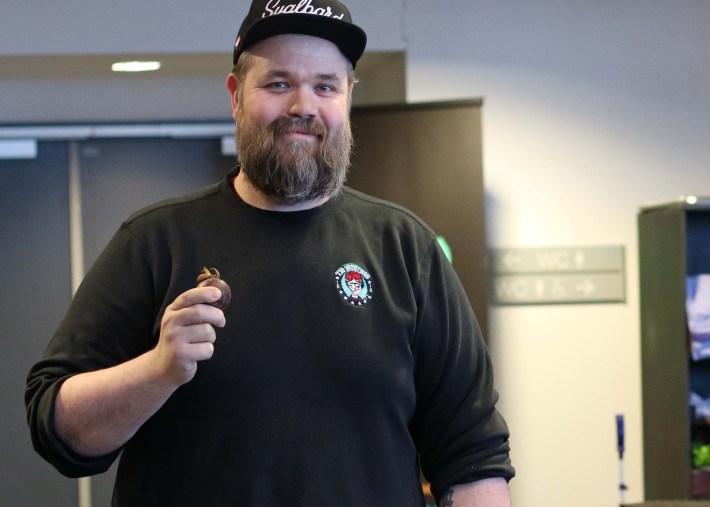
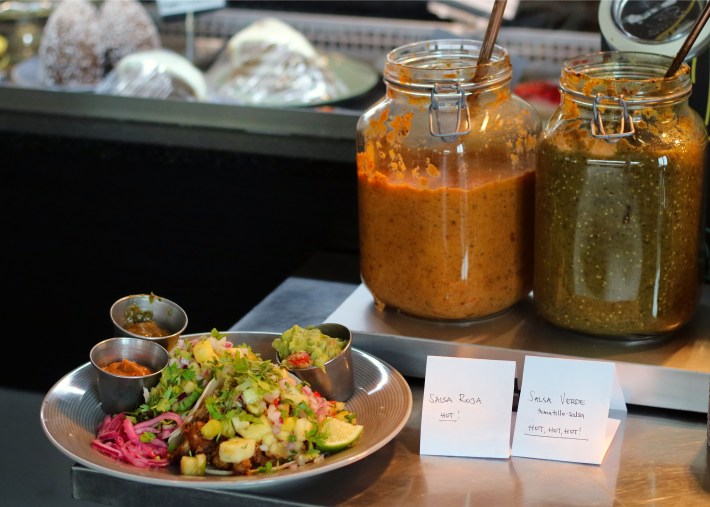
La California specializes in tortillas de maiz, which are made through a two-day process that starts with dried American-grown corn, which the company nixtamalizes and grinds to customers’ specifications. The tortillería also produces pressed and hand-stretched flour tortillas, which are made with pork lard and come out so delicate they come with instructions for properly taking care of them: no more than 30 seconds on the heat. King Taco uses this for their burritos; they prefer them to be as lightly dressed as if they were negligees.
He claimed that Styrsell tried a little of everything on his visit, part of a circuitous tour of L.A. that involved eating “about 1,500” tacos. It’s easy to imagine that the colorful murals and mid-century charm of La California drew him in, but what did it, he says, was Corona’s customer service.
Most other spots didn’t want to discuss sending tortillas nearly to the North Pole. (The request might have sounded suspiciously like a prank call on the phone.)
At La California, “We really talk to our customers, and we communicate with them,” Corona said.
She is confident that the two businesses can make it work. The only new thing to figure out will be the international shipping, which they’d never done before—“but we’ve shipped to Florida,” she added.
The Lonchera At the Ice Fortress
La California hasn’t had to deal with international shipping yet; the first batch came with Chef Styrsell in his suitcase.
“Did you know that you can check ten bags on SAS?” he confided before offering to commission me as a tortilla mule on my next trip to California.
He showed me the reams of corn tortillas stacked in his refrigerator, plus a few closely guarded, burrito-size flour ones he was saving for personal use. He hadn’t entirely decided what he wanted to fill them with.
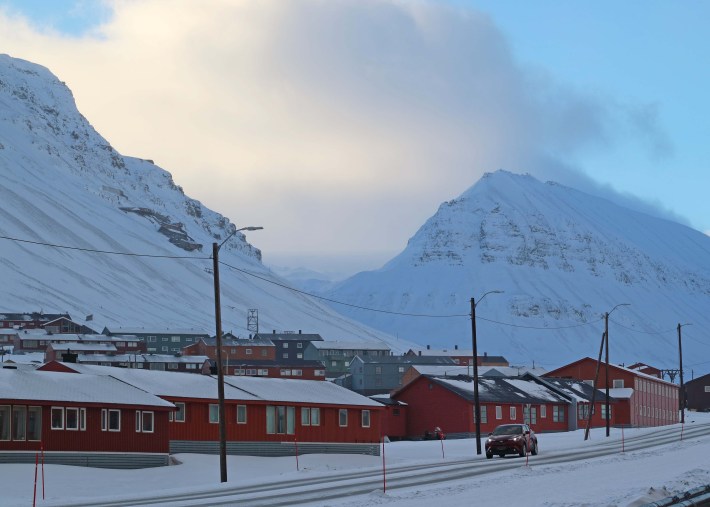
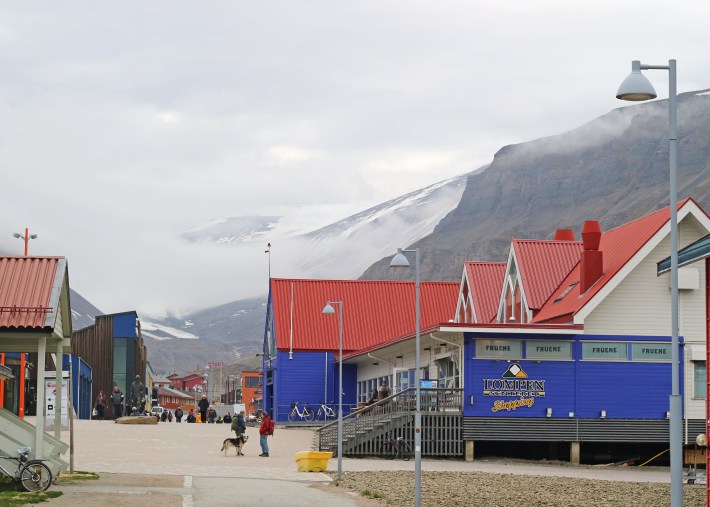
“Carnitas, maybe,” he said, fondly patting the picture of City Hall.
Born in Västerås, an industrial city in Sweden, Styrsell has never been to Mexico. He learned to cook the cuisine through books and YouTube, which helped him realize how far his early conception of tacos was from their kaleidoscopic reality. (Many Swedish and Norwegian families make Tex-Mex style tacos every Friday, resulting from pervasive marketing by Old El Paso in the 1990s).
He visited L.A. and San Diego for the first time in 2016 when he worked as a chef in Longyearbyen for four years. After years of following the cities’ best taquerías, trucks, and tents from afar, getting his hands on their tacos was a near-religious experience.
“It was like a food truck mecca,” he said. “I spent my time just eating a lot, talking to a lot of people, learning, talking about how they do all sorts of stuff. I just put everything in my backpack and took it home.”
A few years later, he bought a food truck from a Mexican restaurateur in Stockholm and drove it all the way to the northern edge of Norway, taking a freight ship for the last leg across the Arctic Ocean. The world’s northernmost lonchera opened in the summer of 2019 and trucked on through the pandemic until 2022, when Styrsell took over the cafe space in the library building.
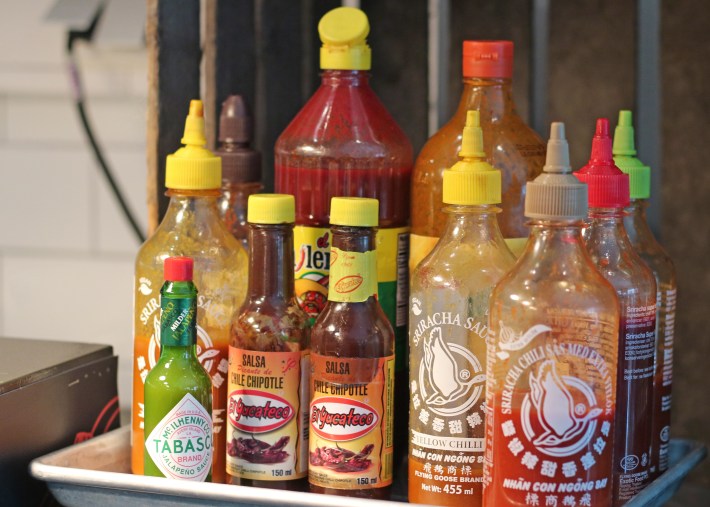
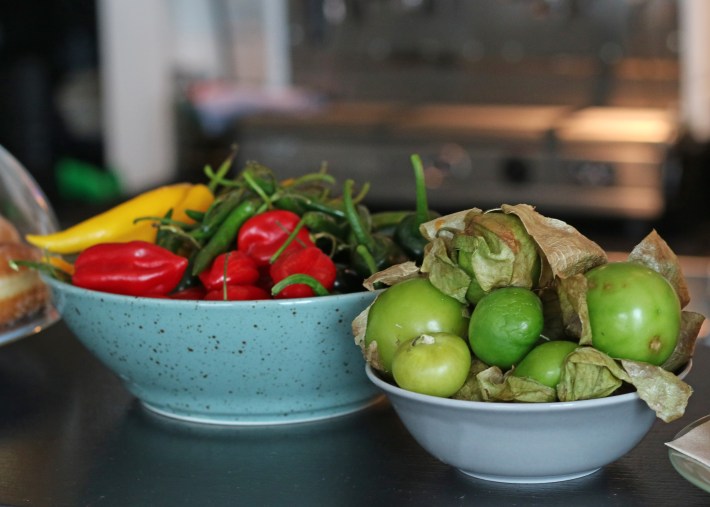
Since then, Tio’s has served as a kind of canteen for Longyearbyen locals, echoing the mess halls that once served the same coal miners who settled this town in the 20th century. A hot lunch, including unlimited salad and coffee, usually costs less than 170 kroner (about $16), a deal in a town where all food arrives by barge or plane, and a watermelon can cost over $20.
Styrrell is committed to keeping his prices affordable, but that’s no easy task when you’re importing tortillas from Los Angeles—not to mention Jarritos, dried chiles, achiote, adobo seasoning, and other crucial ingredients that are hard to find without a nearby Northgate.
“I think maybe Svalbard is the worst place to try to do this because it’s almost impossible to get supplies, and many people here are not willing to pay for it,” he said. “But I’m trying.”
Catering jobs help, especially from the big film productions that stop by now-and-then to capture Svalbard’s snow-covered expanses. The lonchera recently rolled into the tundra to serve the crew of “Superman” as they filmed scenes set in the title hero’s ice fortress.
“It was delicious,” director James Gunn wrote of the food on Twitter.
Styrsell hopes to keep Tio’s going in Longyearbyen as long as he can, maybe one year, maybe three. Nothing lasts forever, especially not in Svalbard—few people live here for more than five years.
But when Tio’s closes, it will leave a rift in the continuity of the community that will be difficult to mend. How will Svalbardites get through the long polar night, which stretches from October to March, without carnitas or al pastor to look forward to each week?
So the clock is ticking for those who want to taste Tio’s tacos before they migrate south.
“Visit soon,” Styrsell said when I asked if he had a message for readers in L.A. “And if you come, bring me some tortillas and I'll pay for your extra bag.”
Tio Moncho’s is located in the Kulturhus at the center of Longyearbyen. Hours vary; check its Facebook.
Phone: +47-79022150
